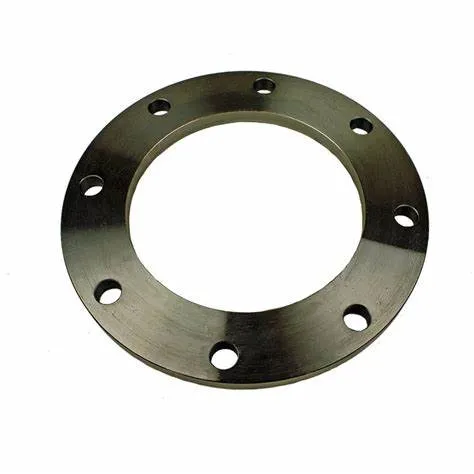-
Cangzhou Yulong Steel Co., Ltd.
-
Phone:
+86 13303177267 -
Email:
admin@ylsteelfittings.com

Nov . 07, 2024 20:04 Back to list
Hydraulic Flange Applications and Benefits in Industrial Systems
Understanding Hydraulic Flanges A Critical Component in Fluid Power Systems
Hydraulic flanges are integral to the operation of hydraulic systems, serving as crucial connectors that facilitate the transfer of high-pressure fluids between various components. Used extensively in industries such as manufacturing, automotive, aerospace, and construction, these flanges are designed to withstand extreme pressure and temperature variations, making them vital for the integrity and efficiency of hydraulic circuits.
At its core, a hydraulic flange is a flat piece of metal with holes that allow for the attachment of pipes or hoses. It typically consists of two main components the flange itself and the gasket, which ensures a smooth seal. The design of hydraulic flanges can vary significantly based on the application, with different materials, sizes, and shapes tailored to meet specific requirements. Common materials include steel, stainless steel, and aluminum, each selected for its mechanical properties, corrosion resistance, and durability.
One of the primary functions of hydraulic flanges is to provide a robust and leak-proof connection between various hydraulic components such as pumps, cylinders, and valves. The high-pressure environment of hydraulic systems demands that these connections be not only strong but also resistant to fatigue and wear over time. Flanges must be meticulously engineered to prevent leaks, which can lead to significant losses in fluid, reduced system efficiency, and potentially hazardous situations.
hydraulic flange

Moreover, hydraulic flanges can be categorized into several types based on their design and use
. Some of the most common types include flat-faced flanges, raised-faced flanges, and blind flanges. Flat-faced flanges are typically used in low-pressure applications, while raised-faced flanges are better suited for high-pressure conditions. Blind flanges, on the other hand, are used to seal off piping systems and prevent the flow of fluids when necessary.Proper installation and maintenance of hydraulic flanges are essential for the longevity and safety of hydraulic systems. During installation, it is critical to ensure that the mating surfaces are clean and free from debris to achieve a proper seal. Gaskets should be appropriately selected based on the operating temperature and pressure of the system, as a mismatch can lead to premature failure. Regular inspections of hydraulic flanges play a pivotal role in identifying signs of wear, leaks, or corrosion, enabling proactive maintenance efforts to take place before issues escalate.
As technology continues to advance, so does the design and manufacturing of hydraulic flanges. The introduction of computer-aided design (CAD) and precision machining has led to more refined and efficient flange designs. Additionally, the use of advanced materials, such as composites and high-strength alloys, is becoming more prevalent, allowing for lighter and stronger flanges that can withstand more demanding operational conditions.
In conclusion, hydraulic flanges are fundamental components in the realm of fluid power systems. Their ability to create secure, leak-proof connections directly impacts the performance and reliability of hydraulic machinery. Understanding the various types, proper installation techniques, and maintenance practices associated with hydraulic flanges can significantly enhance the effectiveness and safety of hydraulic systems. As industries continue to evolve and push the boundaries of technology, the role of hydraulic flanges will undoubtedly adapt, ensuring that these components remain indispensable in modern engineering applications.
Latest news
-
ANSI 150P SS304 SO FLANGE
NewsFeb.14,2025
-
ASTM A333GR6 STEEL PIPE
NewsJan.20,2025
-
ANSI B16.5 WELDING NECK FLANGE
NewsJan.15,2026
-
ANSI B16.5 SLIP-ON FLANGE
NewsApr.19,2024
-
DIN86044 PLATE FLANGE
NewsApr.19,2024
-
DIN2527 BLIND FLANGE
NewsApr.12,2024
-
JIS B2311 Butt-Welding Fittings LR/SR 45°/90° /180°Seamless/Weld
NewsApr.23,2024
-
DIN2605-2617 Butt-Welding Fittings LR/SR 45°/90°/180° Seamless/Weld
NewsApr.23,2024











